Temple fair brings traditions to vibrant life
Writer: Song Yingwen | Editor: Zhang Chanwen | From: Original | Updated: 2024-04-08
Video by Liu Xudong
In the pure brightness after a sudden spring thunderstorm, which is a sign of prosperity and abundance in Chinese culture, magnificent lion dancers in shimmering red and gold costumes danced to the thunderous beat of drums and clang of gongs. They heralded the commencement of a grand procession that kicked off the nine-day Sanyuesan Temple Fair of Beidi (the North Deity) in Xixiang, Bao’an District, on Saturday, the last day of the Qingming Festival holiday.
The temple fair, which runs from Saturday to April 14 this year, was listed as a provincial -level intangible cultural heritage in 2022 and is Shenzhen’s largest display of Cantonese folk culture and festival celebrations.
Cultural legacy
The 500-year-old temple fair is a traditional celebration of the birthday of Beidi, a deity traditionally worshiped in southern and eastern China for his connection to water. The birthday is usually celebrated on Sanyuesan, the third day of the third month in the Chinese lunar calendar, which falls on April 11 this year. The festivities will reach their zenith with a ceremony that sees the statue of Beidi return to his temple seat, an opulent pun choi banquet, and the traditional ritual of offering a roasted suckling pig on that day.
One hundred and six performance teams took part in Saturday’s parade. With a palpable sense of excitement in the air, the procession of mighty dragon and lion dancers, elegant ladies in ancient costumes, vivid legendary figures, and vibrant costumed dragons and lions twisted and leapt to the pulsating beat of drums as it snaked its way along a 4-kilometer route that linked a handful of significant historical sites in Xixiang. Rows of enthusiastic spectators flanked the parade, eagerly capturing every detail of the performance.
Lin Fangwu, leader of the Houxi Yingge Dance Troupe from Chaoyang, Shantou City, shared his troupe’s anticipation for the fair, having secured their participation in November last year.
“We rehearsed until midnight these days, hoping to give the audience an unforgettable show,” Lin said.
Dozens of cultural events unfolded in various subvenues during Saturday’s celebration, offering visitors an array of interactive experiences, culinary delights, and souvenirs. More than 50 events are slated to take place throughout the nine-day celebration, promising a diverse and engaging experience for visitors.
“It’s an exciting experience!” said a visitor surnamed Huang, from Jiangmen, who traveled to Shenzhen specifically for the fair. “I learned about these intangible cultural relics on the internet, and I didn’t expect to see them all at a temple fair! I am very impressed and drawn in by these wonderful performances — one after another,” he said.
Heritage preservation
The live streaming of the temple fair garnered nationwide attention, with over 30 million viewers tuning in to witness the parade online Saturday, according to the organizers. The festival’s real-time interpretation in sign language won praise from viewers for its inclusive approach.
At the Qiyun Academy, built in 1885, a group of experts on Guangdong’s folk culture and history held a seminar on preserving and revitalizing Xixiang’s cultural heritage and traditions. This longstanding practice, which is integral to the event, aims to shed lights on the district government’s efforts towards securing national-level intangible cultural heritage recognition for the temple fair.
Experts underscored the importance of engaging younger generations in sustaining and rejuvenating intangible cultural heritage. “Education, promotion, and participation are crucial,” emphasized Liu Xiaochun, deputy director of the Institute of Chinese Intangible Cultural Heritage at Sun Yat-sen University.
As well as inviting more young performers to the annual festival, Xixiang has introduced the history and customs of the temple fair to primary and middle school students in the subdistrict. “We should further enhance the students’ cultural exposure to this heritage through textbooks, art forms, and creative activities,” said Wang Chengtain, chairman of the Shenzhen Intangible Cultural Heritage Protection Association.
Coming highlights
• Lion dance, kylin dance, dragon dance
Dates: 2:30-3:30 p.m., Monday through Wednesday
• Intangible cultural heritage performances
Date: 4:30-5:30 p.m., Tuesday
• Pun choi banquet
Date: 6-8 p.m., Thursday
• Hunan Huagu Opera (Flower-drum Opera, a national intangible cultural heritage)
Date: 4:30-6 p.m., Friday
Venue: Plaza of the Beidi Temple
• Sanyuesan Temple Fair —Ritual Offering of a Roasted Suckling Pig
Date: 11 a.m. Thursday
Venue: Zhenli Road
• The 2024 Lingnan lion dance king competition
Dates: Late April
Venue: Xixiang Stadium
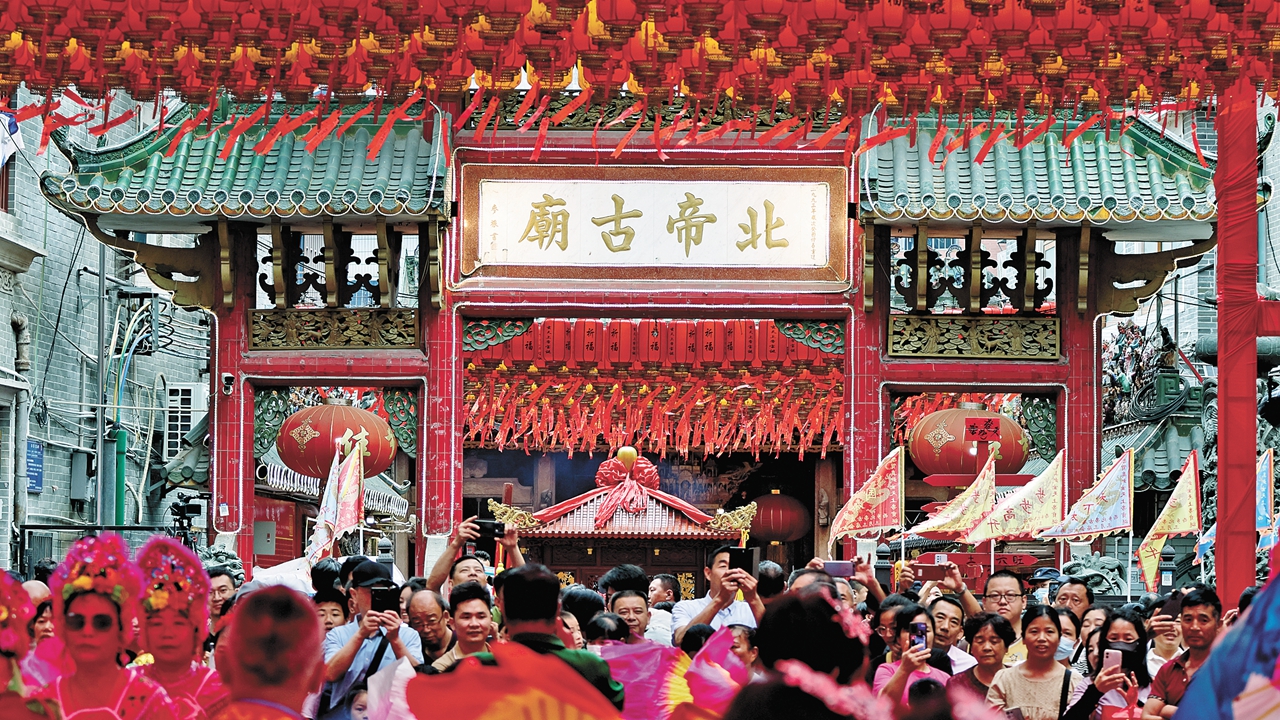
Spectators are enchanted by a performance during a grand procession that kicked off the nine-day Sanyuesan Temple Fair of Beidi (the North Deity) in Xixiang, Bao’an District, on Saturday. The temple fair, which runs from Saturday to April 14 this year, was listed as a provincial-level intangible cultural heritage in 2022 and is Shenzhen’s largest display of Cantonese folk culture and festival celebrations. Photos by Liu Xudong and Wang Haolan
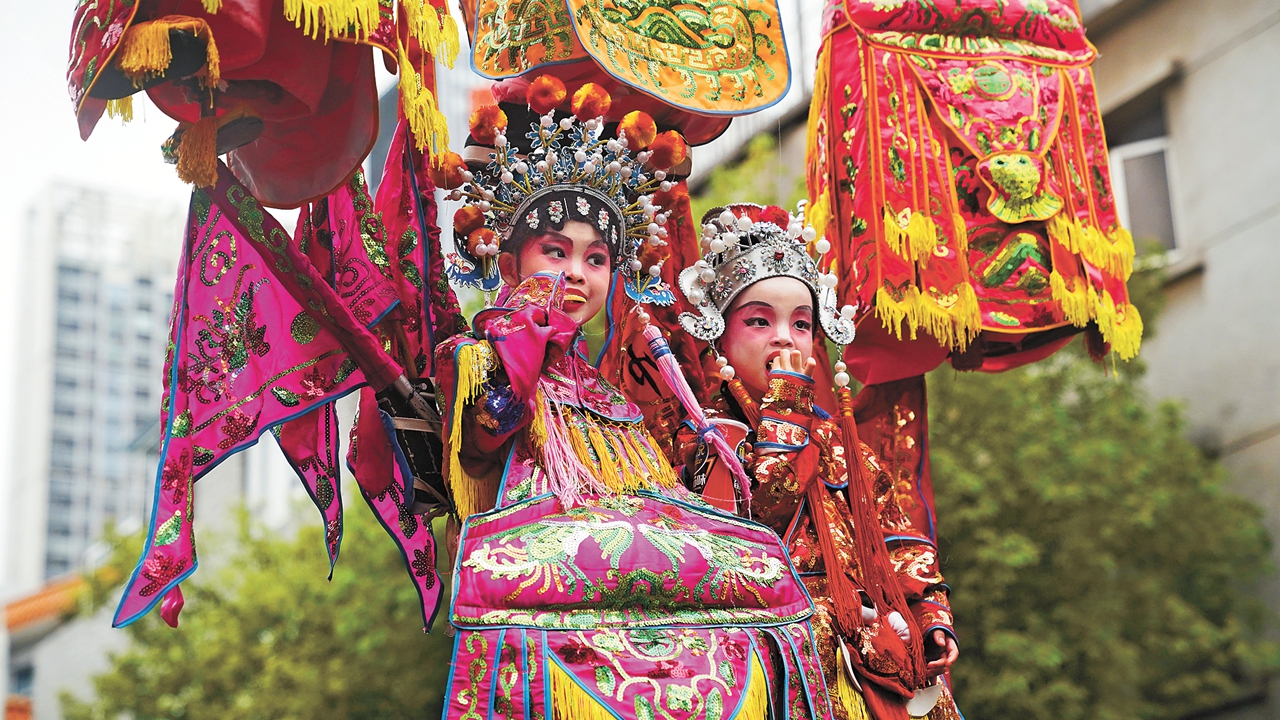
Young performers from Meilin Piaose Art Troupe dressed up as mythical characters during the parade.
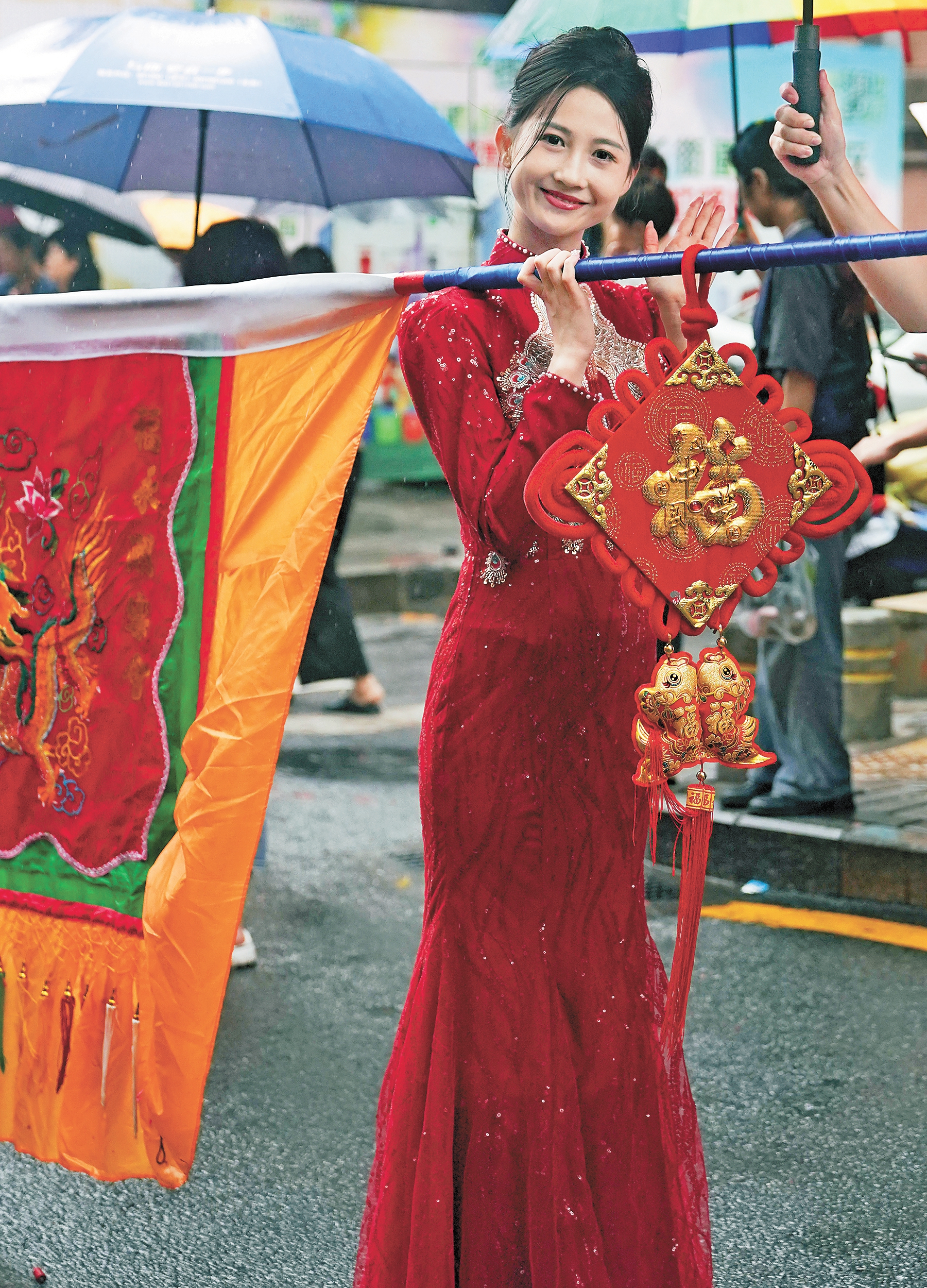
A young woman, bearing a flag adorned with auspicious slogans, poses for a photo during Saturday’s parade. In Guangdong’s Chaoshan region, selecting young women to carry the flags is regarded as an important ritual to honor the gods.
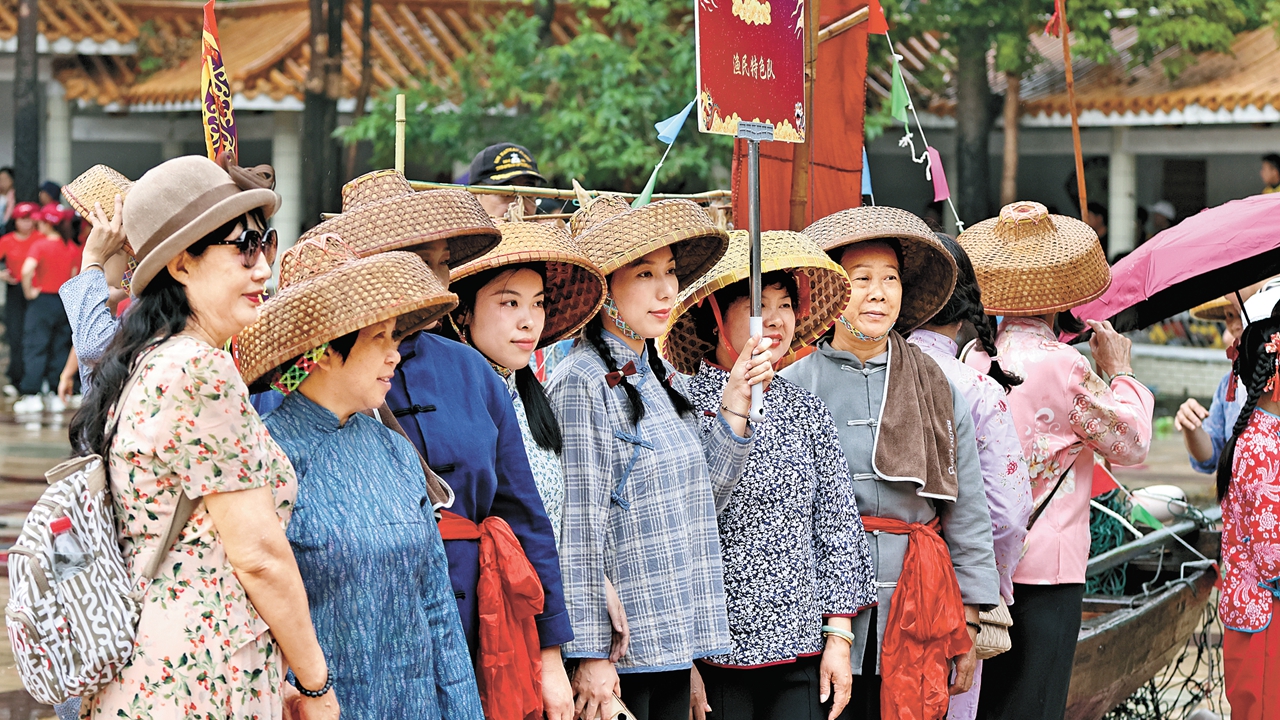
Residents from local fishing communities in Bao’an pose for a photo at Xixiang Park on Saturday.
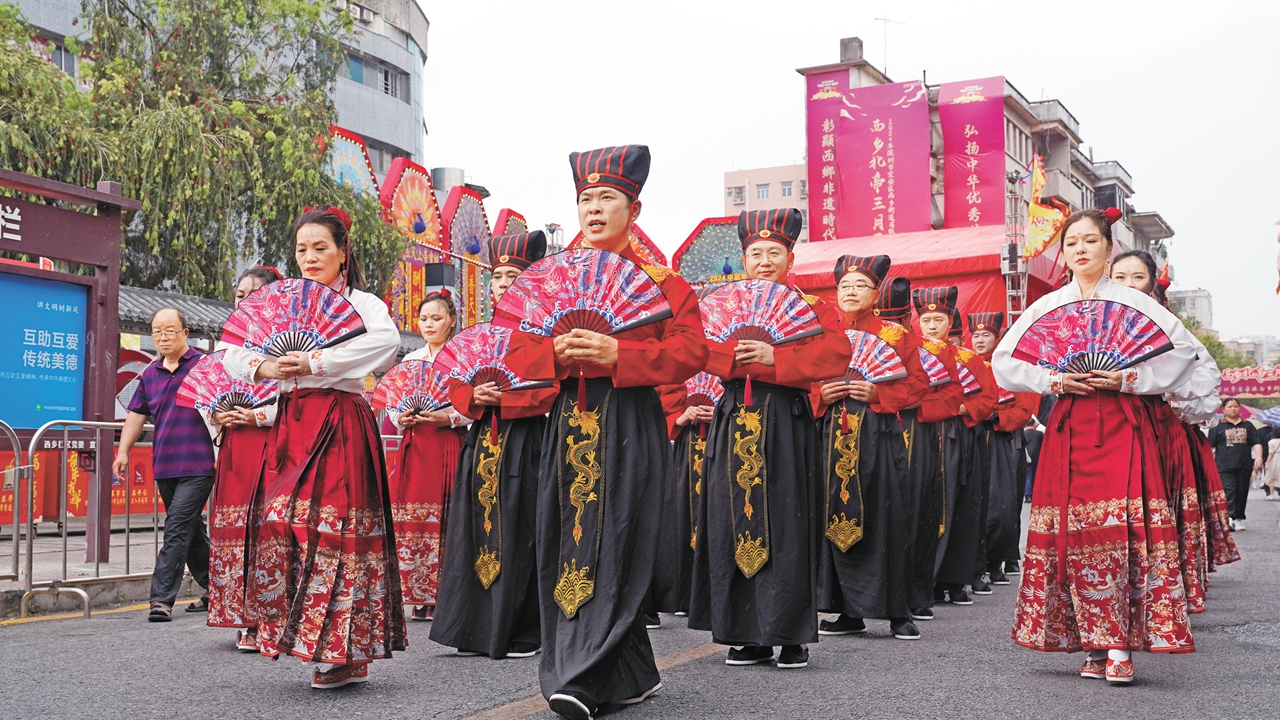
Performers rehearse traditional Chinese etiquette near the North Deity Temple on Saturday.
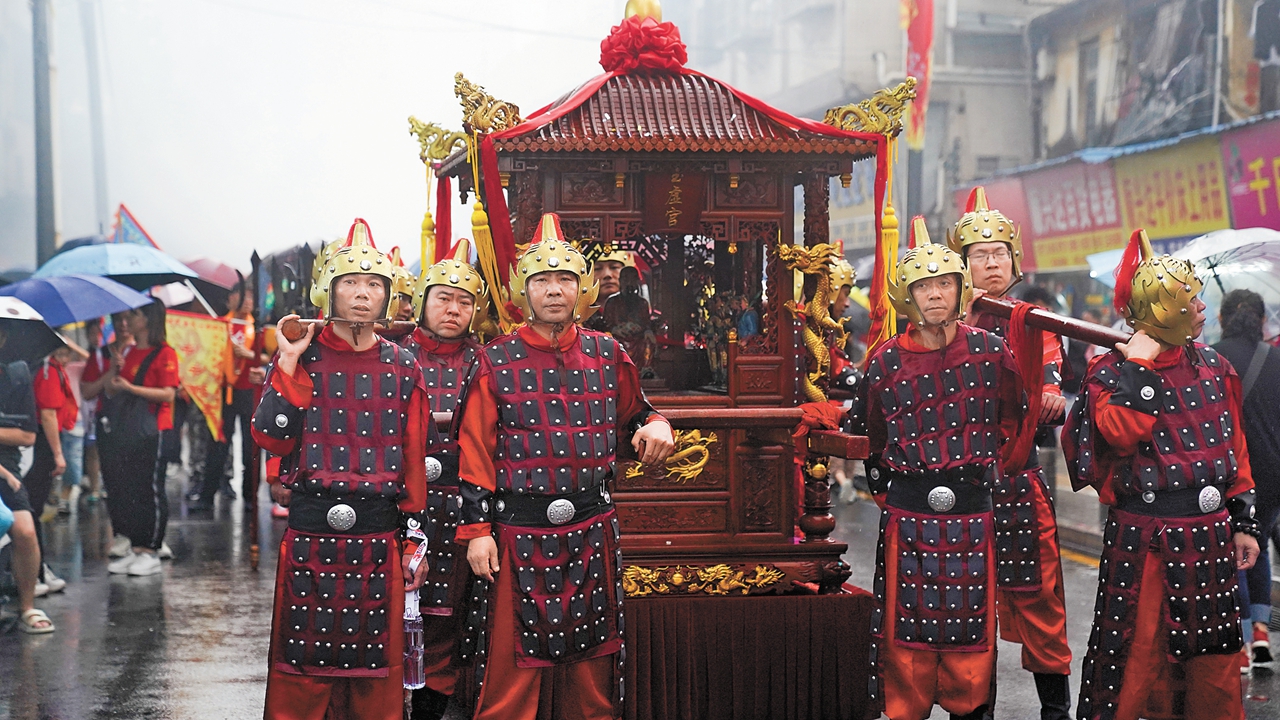
A sedan carrying the statue of Beidi (the North Deity) is paraded along the street near the Xuantan Ancient Temple in Xixiang Subdistrict on Saturday.
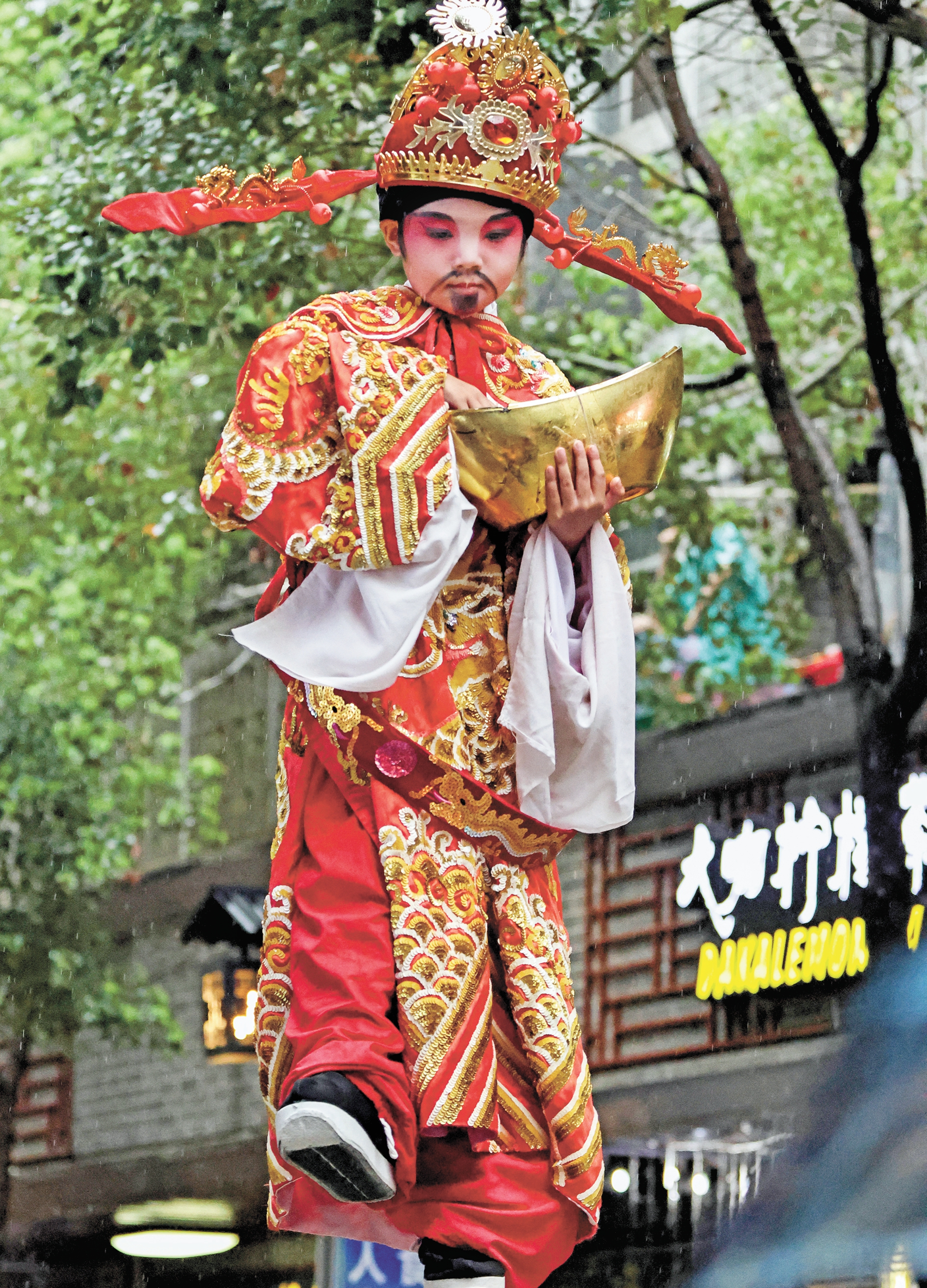
A young performer from Meilin Piaose Art Troupe in Zhanjiang, Guangdong Province, plays the role of a god of fortune during the parade in Xixiang Subdistrict, Bao’an District, on Saturday.
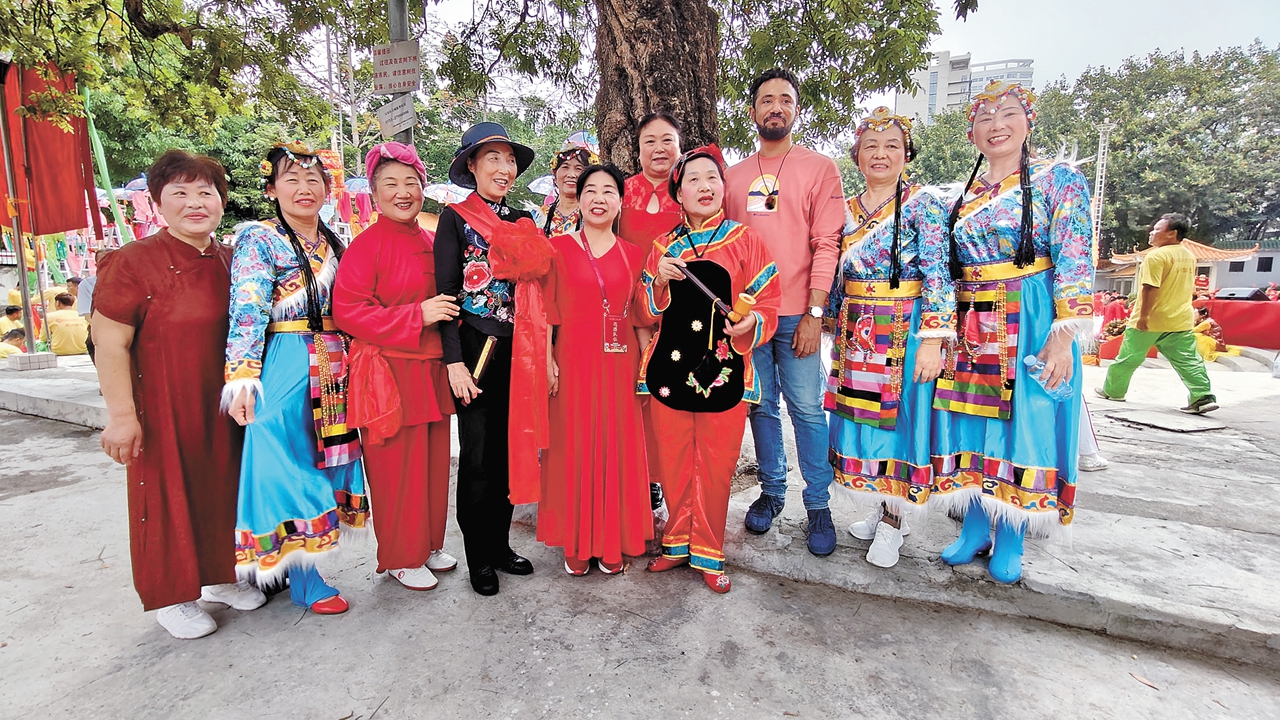
Zachariah Sean Mills (3rd R) from the U.S., who works as a copy editor with Shenzhen Daily, poses for a photo with a local art troupe, before they participate in the parade of the Sanyuesan Temple Fair of Beidi (the North Deity), at Xixiang Park in Bao’an District on Saturday.